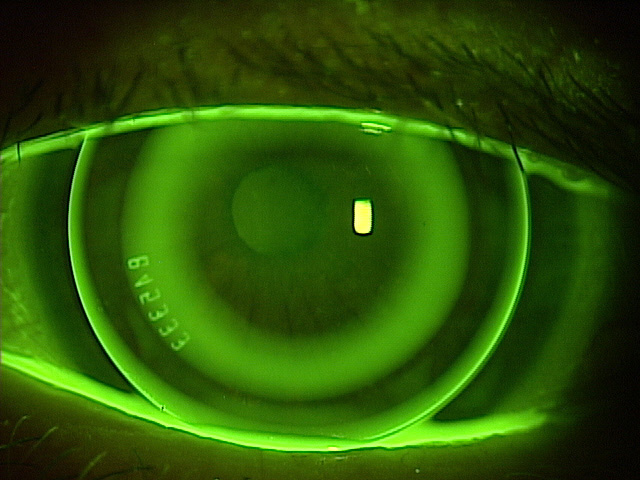 |
| The meta-analysis demonstrated that the lens option significantly reduced the diopter change, the length of ocular axis and the amount of ocular axis change over both one and two years. Photo: Robert Ensley, OD, and Heidi Miller, OD. Click image to enlarge. |
Orthokeratology (ortho-K) has long been recognized as a beneficial option to control myopia progression in children. Researchers in China systematically evaluated the current literature on the modality in reducing myopia development in school-age children to understand its efficacy better and provide reliable evidence for the clinical treatment and care of myopia in children. They found that ortho-K was a safe means to prevent and control myopia—but improving the visual quality of the lens optical area, reducing corneal irritation, improving tear circulation and tear film stability remain important considerations to address.
A total of 14 studies involving 2,058 children were included in this meta-analysis. The researchers analyzed the data of children with myopia whose ages were six to 18 and whose spherical lens was less than -6.00D and cylindrical lens was less than -1.50D with at least one year of follow-up.
Synthesized outcomes indicated that ortho-K improved the uncorrected visual acuity (mean difference; MD = 0.40), reduced the diopter change (MD=-3.19), changes of corneal curvature (MD=-3.21), the length of ocular axis (MD=-0.66) and amount of ocular axis change(MD=-0.42) after one year of wearing ortho-K lenses. Also, the lens option reduced the diopter change (MD=-3.22), the length of ocular axis (MD=-1.15) and the amount of ocular axis change after two years of wear (MD=-0.53).
“The results of this meta-analysis have showed that compared with the frame lens, the naked vision, corneal curvature, diopter, axial length and their changes of the patients with the corneal plastic lens are statistically different and the myopia control effect are better than the frame lens,” the authors of the paper highlighted.
The team was still apprehensive about whether there were differences in the long-term efficacy and safety of ortho-K for children of different ethnic groups, as well as the efficacy of different ortho-K lenses for patients with different types of myopia and different ages. They concluded that these matters still need to be further verified by a large sample of high-quality randomized controlled studies.
Li X, Xu M, San S, et al. Orthokeratology in controlling myopia of children: a meta-analysis of randomized controlled trials. BMC Ophthalmol. 2023;23:441. |

